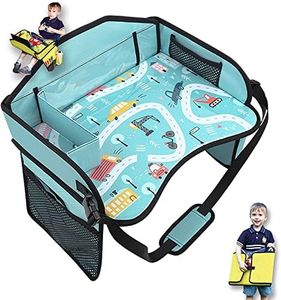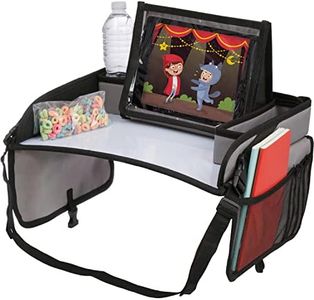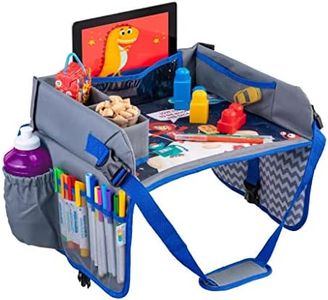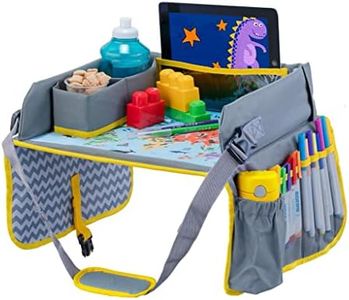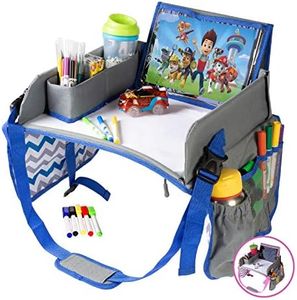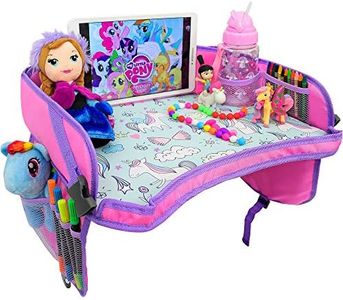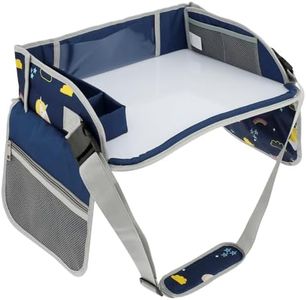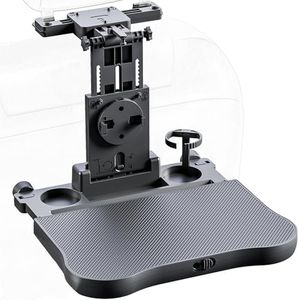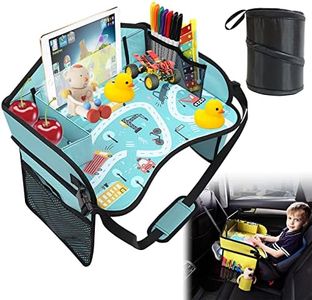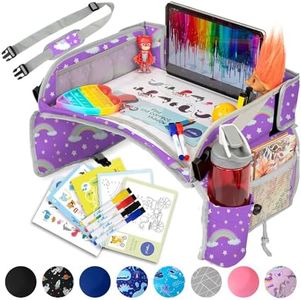We Use CookiesWe use cookies to enhance the security, performance,
functionality and for analytical and promotional activities. By continuing to browse this site you
are agreeing to our privacy policy
10 Best Car Seat Travel Trays
From leading brands and best sellers available on the web.Buying Guide for the Best Car Seat Travel Trays
Choosing a car seat travel tray can really improve your kid's comfort and make traveling by car much more pleasant for everyone involved. The main idea is to give your child a stable surface for playing, eating, or drawing while on the go. When shopping for a car seat travel tray, your goal should be to find one that's safe, practical, comfy for your child, and fits nicely with their car seat and the car's setup. Focusing on the key features below will help you pick a tray that works well for your family's needs and keeps little ones entertained and organized during trips.Tray Surface SizeThe tray surface size refers to the flat area your child will use for playing, drawing, or eating. This is important because a tray that's too small may not give enough space for activities, while a very large tray could be bulky and hard to fit in your car. Generally, smaller trays are sufficient for toddlers and offer easy portability, while larger trays suit older children who might want more space for coloring books or small toys. To choose the right one, consider your child's age and what activities you expect them to do. Make sure the tray fits comfortably over your child's lap and doesn't interfere with seatbelt or harness straps.
Stability and AttachmentStability and attachment point to how well the tray stays in place and attaches to the car seat or child. This is crucial for safety since a wobbly or loose tray can spill food or distract your child. Attachment systems range from simple elastic straps to firmer buckles or adjustable bands. Some trays use rigid sides to keep items from sliding off, while others rely mostly on the top surface. For frequent travelers or energetic kids, firmer and adjustable attachments generally work better. If the child often moves around, a tray that straps securely is safer and easier to use.
Material and CleanabilityThis refers to what the tray is made from and how easy it is to keep clean. Car seat travel trays might be made from hard plastic, padded fabric, or a combination. Wipe-clean surfaces are better for frequent snacks or crafts, while fabric trays with removable covers are good for softer comfort. Easy-to-clean materials are a big help if your child eats or draws often; for those who mainly use the tray for toys, comfort might be more important. Think about how much mess your child typically makes and pick a tray you can quickly clean after a trip.
Storage FeaturesMany car seat travel trays have pockets, cup holders, or organizers built in. These storage features help kids keep their crayons, snacks, and small toys close at hand, which means fewer stops to hand over items. The type and number of pockets range from simple side pouches to full organizers with dividers. If your child has a lot of activities, go for more storage; if trips are short or minimal, a simpler tray might suffice. Choose a design that won’t overwhelm or distract your child but does allow them to be more independent.
CompatibilityCompatibility refers to whether the tray fits properly with your child's car seat and your car’s seat design. Not all trays work with every car seat or booster, so it’s important to check dimensions and attachment style. Some trays are specifically designed for certain types of seats, while others are more universal. To pick the right one, confirm the tray’s size and attachment method match up with your child’s car seat and that it doesn’t interfere with seatbelts or safety harnesses. If you plan to use it in several vehicles or with more than one seat, a flexible design is best.

